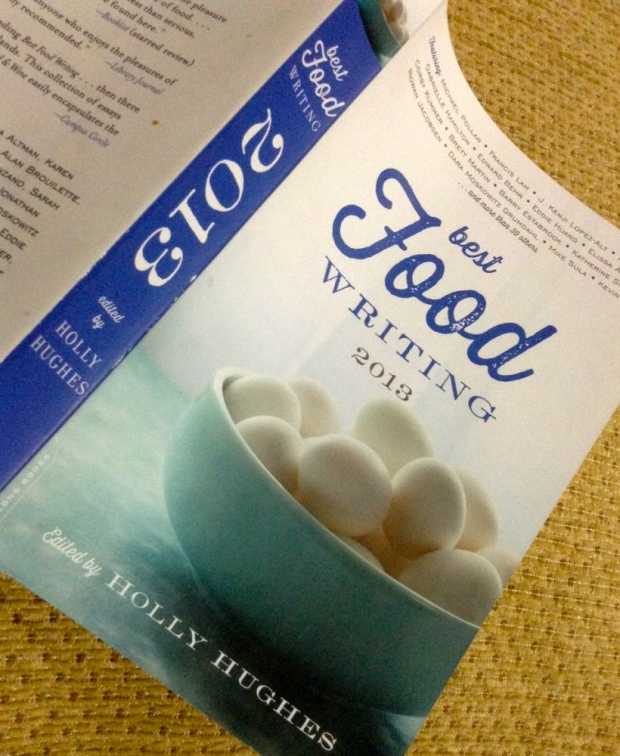Not a member yet? Sign Up!
Info
Please use real email address to activate your registration

The fact that Best Food Writing has been issued every year since 2000 is proof of its popularity. Edited by the same person, Holly Hughes, makes it more credible to those who are starting to be interested in food issues.
Every so often whenever visiting a bookstore I see the book in prominent shelves, but I really would like to buy Best Food Writing 2013 published by Da Capo Life Long Books after reading Diane Jacob’s Blog Post: Get Out Your Best Food Writing and Apply.
Dianne, the author of Will Write for Food has a social media platform that I visit often because of its interesting tips, the dos and don’ts for food bloggers and food writers.
She interviewed Holly Hughes and asked about the submission process for Best Food Writing and what she looks for, to which Hughes replied: “I look for pieces with a clear beginning, middle, and end. I also look for pieces with some relevance beyond a single recipe or restaurant dinner. Local is good, but only if it can be meaningful to a wider audience as well. I definitely am looking for an engaging voice and clear point of view. There should be some human interest beyond just food and cooking technique. The most important criteria: the piece should make me hungry.”

So when The Kitchen Reader Book Club recommended Best Food Writing 2013 for its November book, I did not pass the opportunity, especially when members can decide to read only one part or the whole book.
I planned to read only one chapter or at least two chapters as reading all 49 essays covered in five chapters would be too time consuming for me. Hence I read the first chapter first, The Way We Eat Now, and continued with the last chapter, Personal Tastes.
The chapters in Food Writing 2013 are divided into: The Way We Eat Now, A Critical Palate, Farm to Table, The Meat of the Matter, Home Cooking, To Be a Chef, and Personal Tastes.
Before the beginning of every essay Holly Hughes put in a short explanation about the author as well as what he or she is writing. This less than 50 words write up made it easy for me to get the whole picture and helped me decide whether to continue reading or not.
Eating in America and Eating Local dominate the essays in The Way We Eat Now, mostly by looking at a food situation from a national or regional point of view. I was most impressed with a patriotic essay by Brett Martin who through his travel from coast to coast in the United States found Good Food Everywhere.
The last chapter of the book Personal Tastes consists mostly of personal stories about how food connects family members. Stories about mothers succumbing to diseases thus losing the opportunity to cook for their children and how Asian Americans deal with their feelings about food and family traditions are all very touching.
I flipped the book to the chapter on To Be a Chef. Reading the essays was like reading suspense short stories. His Saving Grace, Kevin Pang’s essay for The Chicago Tribune is a story about Chef Curtis Duffy fought insecurity in her teens assisted by his caring teacher, witnessing the impact of murder in his family and the happy ending of owning a successful restaurant.
In the end, I finished all the chapters in Food Writing 2013, thoughtful, remembering what Holly Hughes said when she was interviewed for an article Holly Hughes ’75 Dishes on the Best Food Writing published in her almamater Mount Holyoke alumnae magazine: “I like to think of Best Food Writing as a book you’ll find on the bedside table rather than on the kitchen counter—it’s for reading and musing over, not for cooking from.”
---------------------------------
Text: Amanda Niode
Images: Omar Niode Foundation